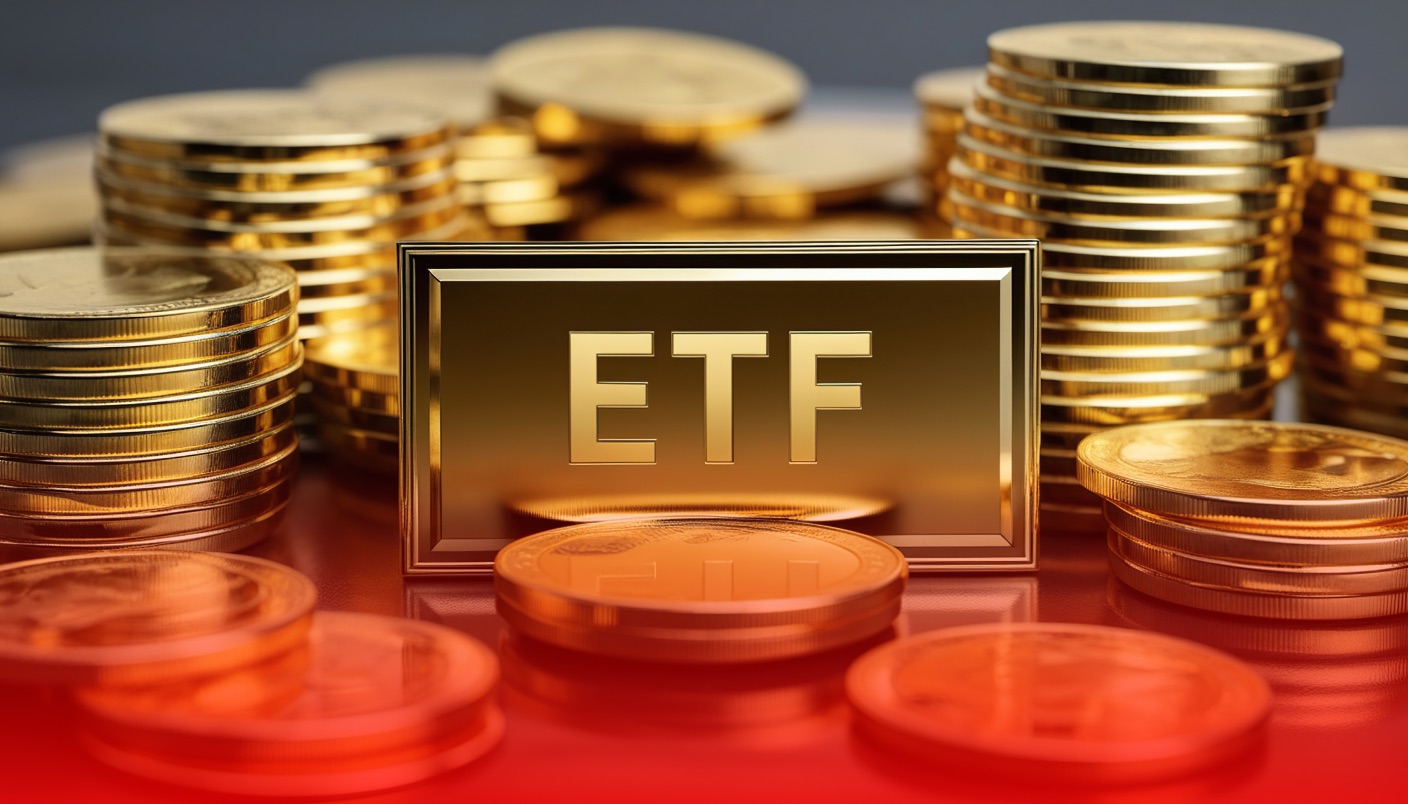Breaking News! 🚨 Top 10 brokers is here! See the most trusted trading platforms of 2024. Go now!
ETFs (Exchange-Traded Funds): Diversified Investment Vehicles
Discover the benefits of ETF investing, exploring diversified investment opportunities, cost-effective strategies, and portfolio allocation techniques using exchange-traded funds.
1 year ago, Sep 20, 8:42 am

Exchange-traded funds (ETFs) have become a widely popular investment vehicle, providing diversified exposure to a range of assets through a single, tradable security. Their growing popularity among investors of all levels, from individuals to institutions, is largely due to their inherent advantages such as low costs, tax efficiency, and liquidity.
By pooling a collection of securities, ETFs offer a straightforward way to invest in various asset classes, industries, or investment strategies with just one trade.
What Are ETFs? 💹
ETFs are funds that hold a basket of assets, tracking an underlying index, sector, commodity, or other asset class. Unlike traditional mutual funds, ETFs trade like individual stocks, allowing investors to buy and sell shares throughout the trading day. This real-time trading flexibility, combined with lower expense ratios, has made ETFs a preferred choice for both long-term investors and short-term traders.
Key Benefits of ETFs 🌟
ETFs offer investors diversification, cost-effectiveness, liquidity, tax efficiency, and flexibility, making them an attractive choice for building a versatile investment portfolio.
Diversification
ETFs provide an easy way to achieve broad market exposure without the need to buy multiple individual securities. By holding a basket of assets, whether they are stocks, bonds, commodities, or a mix, ETFs allow investors to spread risk across various asset classes or sectors. This diversification helps reduce the impact of poor performance by a single security on the overall portfolio.
Cost-Effectiveness
One of the primary advantages of ETFs is their cost efficiency. Most ETFs have lower expense ratios compared to actively managed mutual funds, which means investors can keep more of their returns. Additionally, because ETFs trade on an exchange like stocks, investors may avoid the higher management fees typically associated with mutual funds. This cost-effective structure makes ETFs an attractive option for both new and seasoned investors looking to minimize expenses.
Liquidity
ETFs are known for their liquidity, meaning they can be bought and sold throughout the trading day at market prices. Unlike mutual funds, which can only be traded at the end of the trading day, ETFs provide the flexibility to execute trades in real-time. This liquidity is particularly beneficial for investors who need to react quickly to market changes or those who actively trade as part of their investment strategy.
Tax Efficiency
ETFs are generally more tax-efficient than mutual funds due to their unique structure and trading mechanism. Since ETFs are often passively managed and have lower turnover rates, they generate fewer taxable events in the form of capital gains distributions. Furthermore, the “in-kind” creation and redemption process of ETFs allows for the reduction of capital gains when rebalancing portfolios, resulting in potentially lower tax liabilities for investors.
Transparency
Most ETFs disclose their holdings on a daily basis, providing investors with a clear view of what assets they own. This transparency enables investors to make informed decisions and monitor their investments more effectively. In contrast, some mutual funds only disclose their holdings on a quarterly basis, which can leave investors in the dark about the fund’s current composition.
Flexibility
ETFs can be structured to track virtually any index, sector, commodity, or investment strategy, offering a wide range of options to suit different investment objectives. Investors can use ETFs to gain broad market exposure, target specific sectors, hedge against market risks, or even gain exposure to alternative asset classes like commodities or currencies. This flexibility allows investors to build a diversified portfolio tailored to their individual needs and preferences.
Accessibility
ETFs are accessible to all types of investors, from beginners to seasoned professionals. They can be purchased through any brokerage account and require no minimum investment, unlike some mutual funds that may have high minimum requirements. This ease of access allows investors with different capital levels to participate in various markets and investment strategies.
Lower Investment Thresholds
Unlike some mutual funds that require a minimum investment amount, ETFs can be purchased in smaller increments. Investors can buy as few as one share of an ETF, making it possible to invest in a diversified portfolio even with a limited amount of capital. This feature makes ETFs an ideal option for those who are just starting their investment journey or who prefer to invest smaller amounts over time.
Real-Time Trading
Because ETFs trade like stocks on an exchange, their prices fluctuate throughout the trading day. This feature allows investors to take advantage of real-time market movements and execute trades when it suits them, rather than being restricted to end-of-day pricing as with mutual funds. Real-time trading is particularly advantageous for those who employ short-term trading strategies or who want to react quickly to market events.
Types of ETFs 🔄
The ETF universe offers a diverse range of options tailored to different investment preferences and goals.
Here’s a table summarizing the most common types of ETFs:
| Type of ETF | Description | Example |
| Market ETFs | Track major stock market indexes like the S&P 500. | SPDR S&P 500 ETF (SPY) |
| Sector & Industry ETFs | Focus on specific sectors such as technology or healthcare. | Technology Select Sector SPDR (XLK) |
| Commodity ETFs | Track commodity prices, such as gold or oil. | SPDR Gold Shares (GLD) |
| Bond ETFs | Invest in fixed-income securities like government or corporate bonds. | iShares Core U.S. Aggregate Bond ETF (AGG) |
| International & Regional ETFs | Track securities from specific countries or regions. | iShares MSCI Emerging Markets ETF (EEM) |
| Currency ETFs | Provide exposure to foreign currencies. | Invesco CurrencyShares Euro Trust (FXE) |
| Strategy ETFs | Employ specific investment strategies like dividend growth. | Vanguard Dividend Appreciation ETF (VIG) |
| Inverse & Leveraged ETFs | Designed to move inversely or amplify returns of an index. | ProShares Ultra S&P 500 (SSO) |
| Thematic ETFs | Focus on trends like technology innovation or sustainability. | iShares Global Clean Energy ETF (ICLN) |
| Active ETFs | Actively managed by portfolio managers to outperform benchmarks. | ARK Innovation ETF (ARKK) |
Trading Strategies for ETF Investors 📈
ETFs offer flexibility for various trading strategies:
- Buy-and-Hold: Ideal for long-term investors seeking to capture the growth of an entire market or sector over time.
- Active Trading: For those who wish to capitalize on short-term market movements using technical analysis or market trends.
- Sector Rotation: Investors can shift between sectors based on economic cycles, leveraging ETFs to move in and out of different market segments efficiently.
- Hedging: Inverse ETFs can be used to hedge against market downturns, providing a counterbalance to existing investments.
- Core-Satellite: A combination of broad-market ETFs as the core holding, supplemented with actively managed or thematic ETFs to capture specific market opportunities.
- Income Generation: Dividend-focused ETFs or bond ETFs provide a steady income stream, complementing a growth-oriented portfolio.
Conclusion ✅
ETFs have revolutionized the investment landscape by offering a versatile, efficient means of gaining exposure to various asset classes. With their diverse types, ranging from market-tracking ETFs to thematic and strategy-focused options, investors can build a portfolio that aligns with their specific goals and risk tolerance.
Get SCTA's daily newsletter in your inbox every weekday.
You may unsubscribe at any time.
